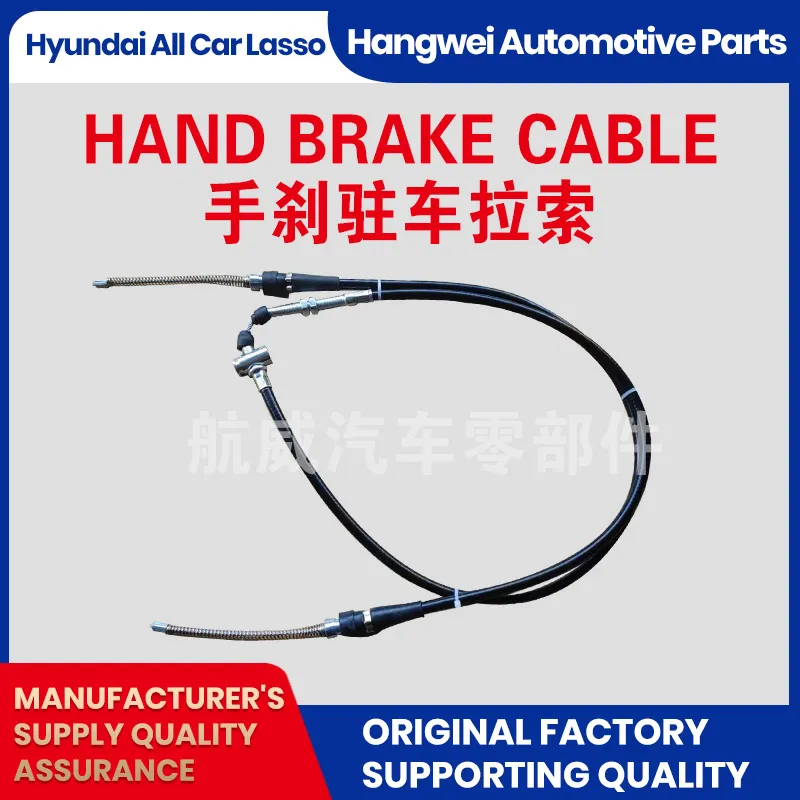cable hand brake
Understanding Cable Hand Brakes A Comprehensive Overview
Cable hand brakes are an essential component in many vehicles and machinery, providing an efficient and reliable means of controlling movement. Whether in cars, bicycles, or various types of industrial equipment, these brakes ensure safety and control when stationary or parked. In this article, we will delve into the mechanism, benefits, maintenance, and applications of cable hand brakes.
Mechanism of Cable Hand Brakes
The fundamental operation of a cable hand brake revolves around the force exerted on a cable that connects the brake lever to the braking mechanism. When the driver or operator pulls on the brake lever, the cable stretches and pulls on the brake mechanism, which is typically situated at the wheels. This action applies friction to the brake pads or shoes against a rotating surface, such as the wheel or a drum, thus halting motion.
There are two primary types of cable hand brakes drum brakes and disc brakes. Drum brakes consist of a hollow drum that rotates with the wheel, and the brake shoes press against the inside of the drum to create friction. In contrast, disc brakes utilize a flat disc that rotates with the wheel, while brake pads clamp around the disc to slow it down. Each system has its own benefits and drawbacks in terms of efficiency, heat dissipation, and maintenance.
Benefits of Cable Hand Brakes
Cable hand brakes are popular in both automotive and non-automotive applications for several reasons
1. Simplicity and Cost-Effectiveness The design of cable hand brakes is straightforward, making them relatively inexpensive to manufacture and repair compared to more complex braking systems, such as hydraulic brakes.
2. Ease of Use These brakes offer user-friendly operation. The mechanical advantage provided by the lever allows the operator to exert significant force with minimal effort, facilitating ease of engagement and release.
3. Reliability With proper maintenance, cable hand brakes are known for their durability and dependability. The absence of hydraulic fluid means there's less risk of leaks or fluid-related failures that can occur with hydraulic systems.
cable hand brake

4. Versatility Cable hand brakes can be employed in various settings, from cars to bicycles and even in industrial machinery, making them a versatile solution for braking needs.
Maintenance of Cable Hand Brakes
To ensure the optimal performance of cable hand brakes, regular maintenance is essential. Here are some key maintenance tips
- Inspection Periodically check the brake cable for fraying, corrosion, or any signs of wear. Replace damaged cables immediately to prevent brake failure.
- Adjustment Most cable hand brakes allow for adjustment to accommodate stretching or settling of the components. Ensuring proper tension in the cable is crucial for effective braking action.
- Lubrication Keeping the cable and pulley mechanisms lubricated will reduce friction and wear, extending the lifespan of the braking system.
- Cleaning Accumulated dirt and debris can impede the performance of the brake. Regular cleaning of the components ensures they operate smoothly.
Applications of Cable Hand Brakes
Cable hand brakes can be found in various applications. In automotive contexts, they serve as parking brakes in most vehicles, providing security when parked. In the bicycle industry, they are commonly used in both mountain and road bikes, offering reliable stopping power for riders. Additionally, industrial equipment often employs cable hand brakes for effective control of heavy machinery, ensuring safety during operation.
In conclusion, cable hand brakes play a crucial role in enhancing safety and control in many vehicles and machinery. Their simplicity, reliability, and ease of maintenance make them an excellent choice for numerous applications. By understanding their mechanism and taking appropriate care, operators can ensure that these essential components function correctly and effectively. Whether you are a vehicle owner, a cyclist, or involved in industrial operations, a good grasp of cable hand brakes will undoubtedly enhance your safety and control on the road or at work.
-
Workings of Clutch Pipe and Hose SystemsNewsJun.04,2025
-
The Inner Workings of Hand Brake Cable SystemsNewsJun.04,2025
-
The Secrets of Throttle and Accelerator CablesNewsJun.04,2025
-
The Hidden Lifeline of Your Transmission Gear Shift CablesNewsJun.04,2025
-
Demystifying Gear Cables and Shift LinkagesNewsJun.04,2025
-
Decoding Clutch Line Systems A Comprehensive GuideNewsJun.04,2025
